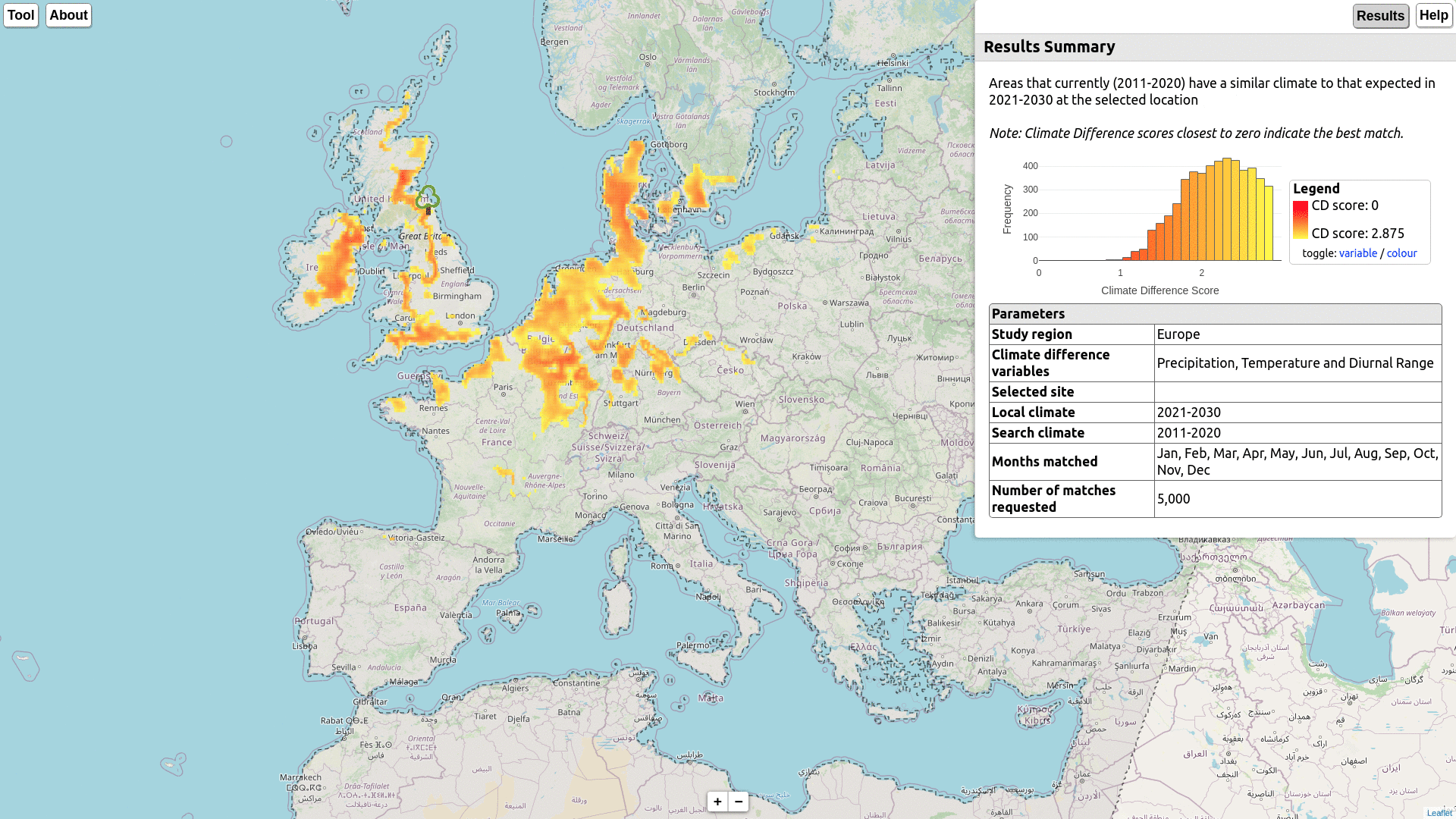With global warming projected to increase by a further degree within the next 2 decades and with global temperatures potentially rising to 4 °C above pre-industrial levels by the end of the century, it is critical that we plan and plant our forests appropriately for both current and future climates.
The climate matching tool provides a visualisation of regions with a similar climate to the climate projection for any location in Europe. It gives an indication of the climate that trees are likely to experience in the future. This can help practitioners to consider the selection of better suited material from environments that England, Scotland, Wales, Northern Ireland, all of Europe, and the Pacific Northwest, may experience in the future.
It is critical that forest resilience is carefully considered under climate change. This is not a simple matter of matching future climate analogues 20-50 years from now. The early establishment period of forests and woodlands, up to and including canopy closure, is of paramount importance. If material is unsuited to current abiotic pressures that lead to large scale failures, the effort and cost of establishment will be wasted. Therefore, the climate matching tool allows users to look into the near climate future to select sources of material able to establish and form resilient woodlands and forests. The tool also provides a longer-term view of climate change, and this is intended to help policymakers and practitioners prepare for more extreme climate pressures in the future.
The climate matching tool should be seen as complementary to the Ecological Site Classification tree selection tool, which shows how trees will perform in a future climate but does not take into account adaptation. Seed sourced from climate analogues 10 years into the future may help maintain forest resilience under climate change. For users in England, you can find out more about this on pages 13, 14 and 15 of the Managing England Woodlands in a climate emergency guide.
The advanced version of the climate matching tool also covers the Pacific Northwest, allowing an exploration of site types associated with the native and exotic species widely used in British forestry. The tool can also be used to test the potential distribution of pests and diseases as they adapt their range under climate change.
Underpinning the tool is UKCP18 climate data at 12 km resolution using the RCP8.5 pathway in future projections. Sites that are similar to one another are identified on the basis of the mean monthly temperature, diurnal temperature range and rainfall. Given the scale of the data, users will also need to consider local site characteristics (such as topography and soil) in their decision-making.
This climate matching tool is the first Forest Research product to utilise the UKCP18 climate projections and has been developed collaboratively with UK and international partners including those in the B4EST project.
